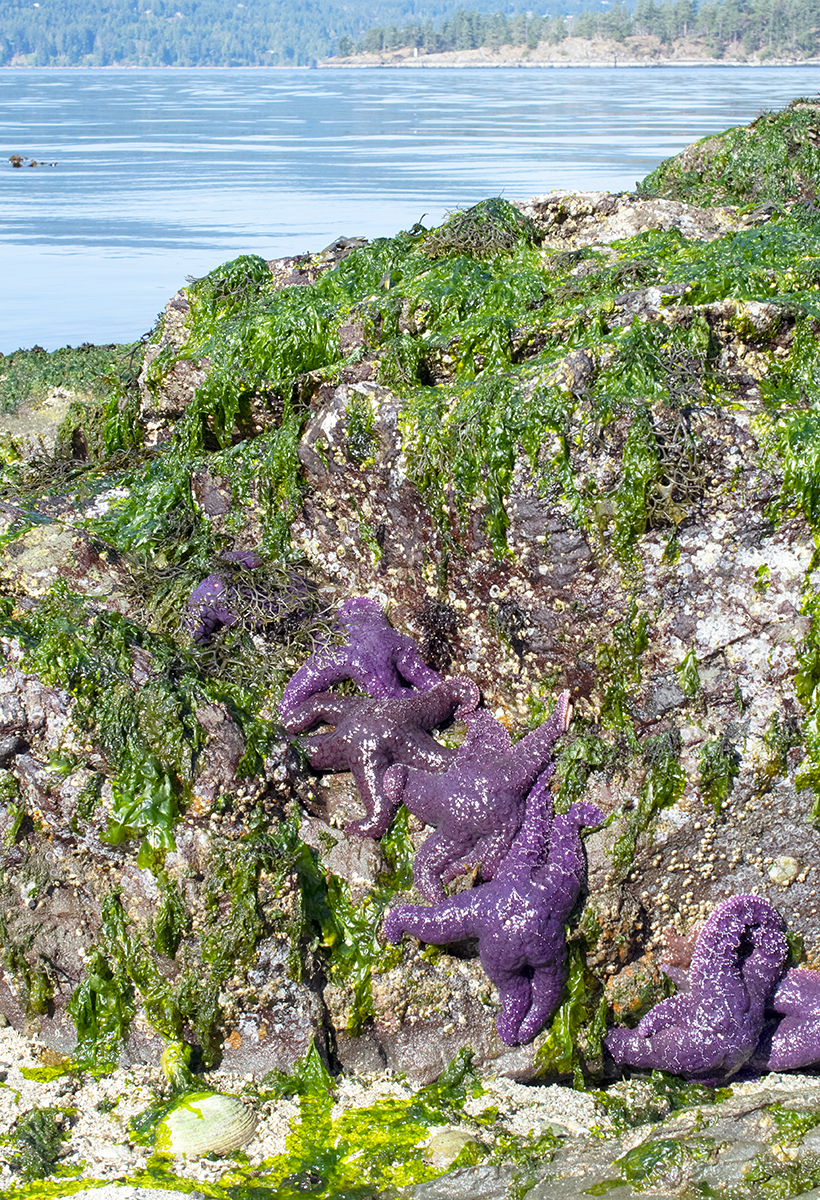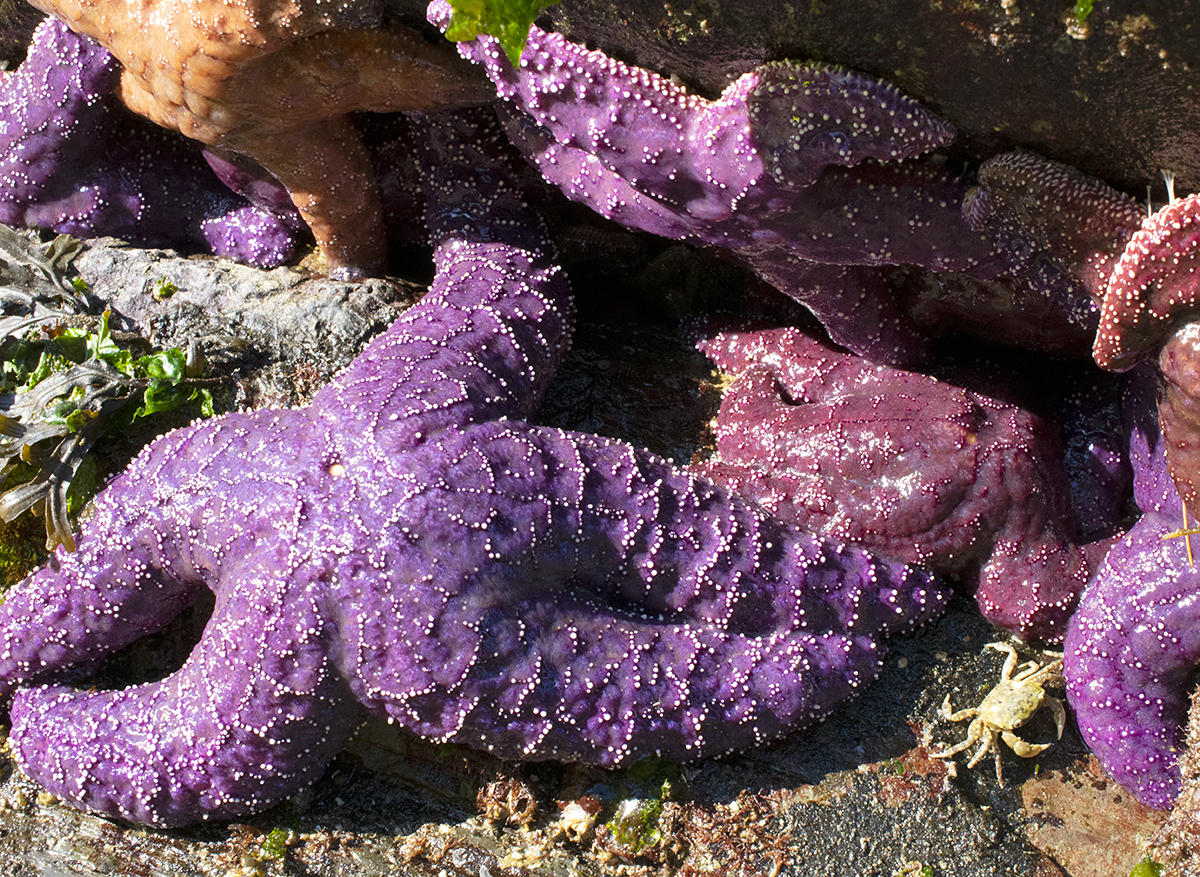Purple Sea Star
Author: Jessica Dillon
Photos by D. Young
Common Names: Purple Sea Star, Ochre Sea Star, Purple Ochre Sea Star
Scientific Name: Pisaster ochraceus
Size Range: Diameter is approximately 25-30 cm.
Identifying Features: Purple Sea Stars also known as Ochre Sea Stars, come in a range of colours from deep purple to rusty browns depending on their diet. They have five stiff arms and are covered in small spines. Their upper surface is a layer of rough “skin”, while the bottom is made up of small tube feet, used for movement. Although they have many tube feet, they are slow moving creatures.
Habitat: The Purple Sea Star lives in the Pacific Northwest in the intertidal zone down to approximately 97m (320ft.) in depth. They are commonly found on rocky beaches in the Gulf Islands and along the coast of British Columbian where they hide under rocks for protection when the tide is out.
Food: The Purple Sea Star eats mostly bivalves, and their diet includes mussels, crabs, barnacles, snails, and certain limpets. The Sea Stars form large groups for feeding and eat by using their strong arms to pull apart the shells of their prey and push one of their stomachs into the shell where they then feed from the inside. The Purple Sea Star is a carnivore, much like most other species of sea stars.
Predators: Since the Purple Sea Star is so well equipped for protecting itself, it has few predators once in its adult stage. Mainly, common gulls have been known to feed off of Purple Sea Stars, and other stars are seen as fierce predators, but with its tough outer layer and ability to hold tight to surfaces with its tube feet, it is rarely targeted as prey.
Purple Sea Stars at low tide during the summer on Prevost Island, British Columbia.
Life Cycle: Male and female sea stars reproduce by spawning. Pairs of gonads in each of their five arms produce and release sperm or eggs into the water through pores in their skin. Chance fertilization then occurs. The young Sea Stars closely resemble the adults, but without such tough skin.
References:
Kozloff, E. (1993). Seashore Life of the Northern Pacific Coast: An illustrated guide to Northern California, Oregon, Washington, and British Columbia. Seattle, Washington: University of Washington Press.
Lamb, A & Hanby, B.P (2005) Marine Life of the Pacific Northwest: a Photographic Encyclopedia of Invertebrates, Seaweeds and Selected Fishes. Madeira Park, BC Harbour Publishing.
McDaniel, N. (2011). Sea Stars of the Pacific Northwest. Retrieved on May 26, 2011 fromhttp://www.seastarsofthepacificnorthwest.info/species/purple_star.html
North Island Explorer (unknown). North Island Explorer: Your guide to the natural world of North Vancouver Island. Ochre Sea Star retrieved May 26, 2011 fromhttp://northislandexplorer.com/echinoderms/ochreseastar.htm
Pacific Wildlife Foundation (July 2004). Ochre Sea Star Pisaster Ochraceus. Retrieved June 9, 2011 from




